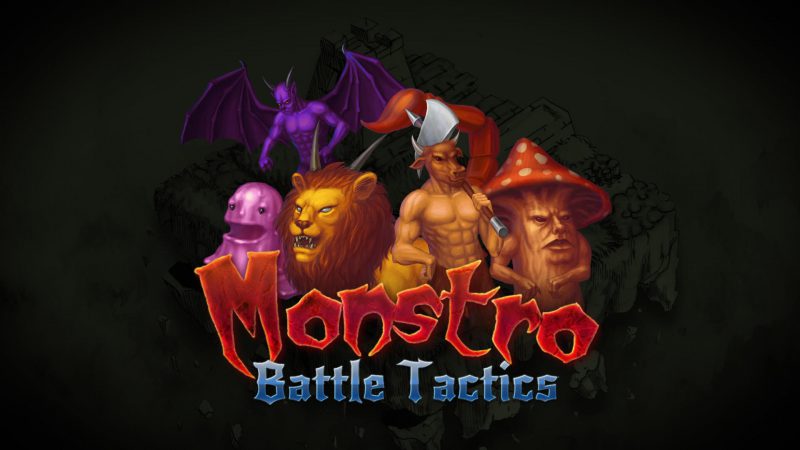Monstro: Battle Tactics postmortem
It’s been over a year since the release of Monstro: Battle Tactics on Steam and three years since its initial release. Inspired by Zack Bell’s tweet I’ve decided to finally get this over with. I need to get some things straight in my head anyway!
Monstro: Battle Tactics is a logical game that plays almost like a tactic-RPG. Fully deterministic combat using units with various stats and some abilities is the core gameplay mechanic, augmented by traps, some neutral units and specializations (which are basically preplaced stat modifier for units.) It all holds up pretty well for a game with almost a hundred levels in total if I do say so myself, there are new interactions and unique situations sprayed all over the level list.
If you haven’t played the game here is a very good let’s play (though do take note it’s from the pre-release version):
So let’s get started with the important things, shall we?
Game design
If you’ve played the game or watched the LP at this point it’s pretty obvious that the guiding principle when designing it was simplicity. You see, most of my game design life I struggled with feature creep. Tens of projects never saw the light of day because I had to add one more feature; I had to change one more core element; until the point when I burned out with the project and started another one.
So when I approached my first huge game in a while I wanted to go simple, with a solid feature set. Which of course didn’t work that well for me .
The first poop
If you can do maths you can count there are… <opens up the game files to count> 16 units, including two flags (King and Brain) and the neutral Mobile Wall and Fake Wall. There are also 4 types of traps and more specializations than I remember. Keep those numbers in mind.
When the engine was pretty much done, when I finished the AI, when I had about 40 levels done I ran out of ideas. I realized the levels are fairly repetitive and there just isn’t enough elements to keep the player interested and invested in the gameplay! You see there were no specializations. Nor traps. And only 8 units. Not much to make a game:
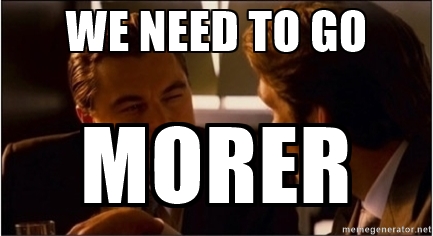
Traps, (some) specializations and the flag units were added and ultimately the game became ready for release. Which… happened.
The Poopest Poop of Them Poops
The next paragraph contains strong language. You have been warned.
The release was a huge clusterfuck of screwing up and mind-bogging disappointing depression. Or to put it in other words – it was a huge joke. I released the installer on Fastspring (nothing to complain about here). I made a blog post on Retrocade.net.

And then two years later the game sold 8 copies. Let that sink for a while. Our marketing strategy was nil. We had zero social media presence. We had nothing, except maybe a few hundred visits from people going to our site from Newgrounds, Kongregate and other flash sites.
HAVE A MARKETING PLAN WHEN YOU RELEASE YOUR GAME
and also
UNLESS YOU GOT, LIKE, VIRAL? START MARKETING EARLY
If there are two things to learn from that it’s those two. And I am not going to comment anymore on that. Not now, not ever. Unless someone asks me about that in an interview. I’ll just add that it led to a depressive period of extremely miniscule self-confidence for me.
Releasing on Steam
One faithful day I got an email that Monstro was Greenlit! It was, I think, a year after the release of the first version. If you think I was happy then you are wrong – I was sad and angry partially because I wanted to put the misery of that project behind me, partially because at that point I have decided to commit to being a full-time hobby [sic] DROD developer. Nevertheless after some deliberation with Alex (who is my friend, an artist and partner in gamedev) I have started to work on the game again.
My first idea was to rewrite the game in HTML5 because of flash being already on its road to death. This turned out to be more work than I anticipated and ultimately I found a way to interface with Steam from AIR Captive Runtime which was a big hurdle.
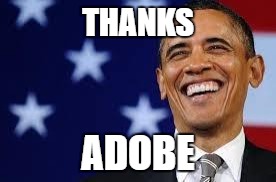
I also wanted to go big with this release. Well, bigger. To increase the variety new units and specializations were added. The whole GUI was reworked ground up, including windows and title screen. New GUI elements were added (like the options after completing a level). A beautiful, new level selection window. New control scheme (traditional click’n’act instead of funky drag’n’drop). But there is more!
Undoing to previous turn; undoing from level completion; undoing in the middle of player’s or enemy’s action; writing description for every single level (and there were over 80 of them) including creation of the very tongue-in-cheek lore; reworking many of the old levels and making new ones. Oh and the lighting system for huge fanciness.
A lot of work, time and money was sunk into all of this, fortunately mostly the first two. I also kind of build some presence on Twitter and Facebook (which also started super late in the process).
And then the game was released. No fireworks but it sold a bit. I guess?
Quick intermission about design
One of the biggest issues I have with the game is that the design space for puzzles is so small and it’s entirely my fault. What I should have done was, at some point, decide to change the basic premise of the game:
- In the game units always have a single type of attack, namely hitting a tile (sometimes in range, most often not). Minotaurs should be able to attack three tiles with a single swing. Manticore should have a counterattack. Pikeman should be able to strike two enemies at a time. And there should be more units with unique properties.
- The enemy AI is deterministic and soon you learn how it works exactly. But every enemey moves the same – it would’ve been much more interesting if different enemies had different movement types like it is in chess.
- More environmental elements to use – auto attacking turrets, tiles that slow you down, collectible upgrades.
With just these changes I’d be easily able to fill every single of the over 80 levels with an interesting and outstanding puzzle. It would also lead to a tighter level design with fewer horde rooms. Welp.
Summary
In total I invested about 10k PLN into the project (~2.5k USD). From the Steam sales I got back about… half of that?
Unfortunately Steam in itself is not enough of momentum to provide long term sales. The fact it is a linear puzzle game of reasonable difficulty makes it harder for a community to grow around it because there isn’t enough material for that.
But on the other hand it was a great learning experience and a long-term investment. I sincerely believe that over the years the project will finally pay itself back.
One thing I am really proud of though. The game is polished a lot. I won’t claim there are no bugs, but a lot of small and seemingly insignificant things had a lot of attention (like graphical and audio transitions). Except texts because proofreading costs and at that point I couldn’t rationalize spending anymore money.
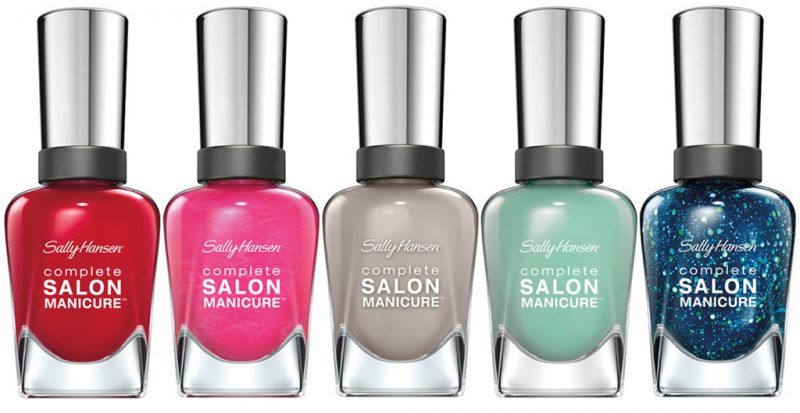
Speaking of that learning experience bit, I have distilled a crapload of points for you and me to learn from this:
- If you think you can learn on other people’s mistakes you’re kinda not right. Each game, person and moment in time is unique and the same problems can be encountered in different ways and have different repercussions and solutions. So while you should read other people’s stories, don’t be afraid to come up with your own conclusions, except maybe…
- Your game is not as good as you think it is. That’s something I already knew (actually personally I have a huge problem with believing I create interesting things) and wasn’t a problem for me, but what I am trying to say is that game being cool, fun, pretty or unique is not enough for it to become popular or sell well. People need to know about the product too.
- When designing the game think ahead and either ensure from the start you have enough design space to create as much interesting content as you intend, or leave yourself enough wiggle room for a healthy dose of feature creep. Monstro could’ve easily evolved into a much more fulfilling experience had I allowed myself to stray from the strict path of simplicity in the design.
- Market early, think about how you want to approach it and spend the time to build a presence.
This video served as a basis of marketing strategy for Monstro. - Marketing takes a lot of time, it’s daunting initially, you need to learn how to write, you need to prepare IMAGES and GIFS and that takes so much time and is annoying and you’ll hate it (unless you don’t). But ultimately, as you get into the habit, it’s not that bad after all.
- Steam release does not guarantee success. Period. It’s not 5 years ago. (or whenever, don’t expect me to know and remember everything, I am just me, sheesh!)
- Think hard about the price and think twice before you determine the price based on your perceived value of the game (eg. in gameplay hours) – think about what an average player (or your target audience) will want to pay. Now that I am smarter I think Monstro should’ve been sold for $3.99 or $2.99 and I am fairly sure I’d have ended up better on that.
- Reach out to reviewers and just because they haven’t answered you the first time it doesn’t mean you shouldn’t send them another mail in two weeks. And another in two months. Just don’t overdo it!
And that’s how, ladies and gentlemen and robots and non-binary people and those who got triggered be me using the phrase “non-binary” and animals and aliens and collective hive minds and whoever/whatever/whenever/however, Monstro: Battle Tactics came to be and came to fail. Luckily I did not strike a deal with a blood sucking publisher. Or marketing team.
I have only myself to blame… And you know what?
I don’t blame myself, it was worth it for the experience of extreme sadness when your game sells 8 copies in two years, and amazing joy when you press that “publish on Steam” button. It was worth it because I started to use Twitter and met a lot of great people on there who are fun to exchange thoughts with. It -was worth it because during that time I learnt a lot about game design and became much more sensitive to it. And it was worth it because I just don’t care about feeling it wasn’t worth it.
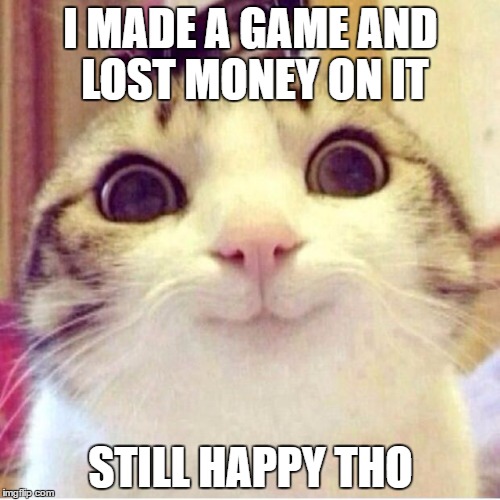
Thanks!
References
- Inception meme from Memegenerator.net
- Sad rage face from Rober-Raik deviantart account
- Obama meme from Imgflip’s Memegenerator
- Nail Polish image from eonline.com
- Happy cat meme from Imgflip’s Memegenerator
